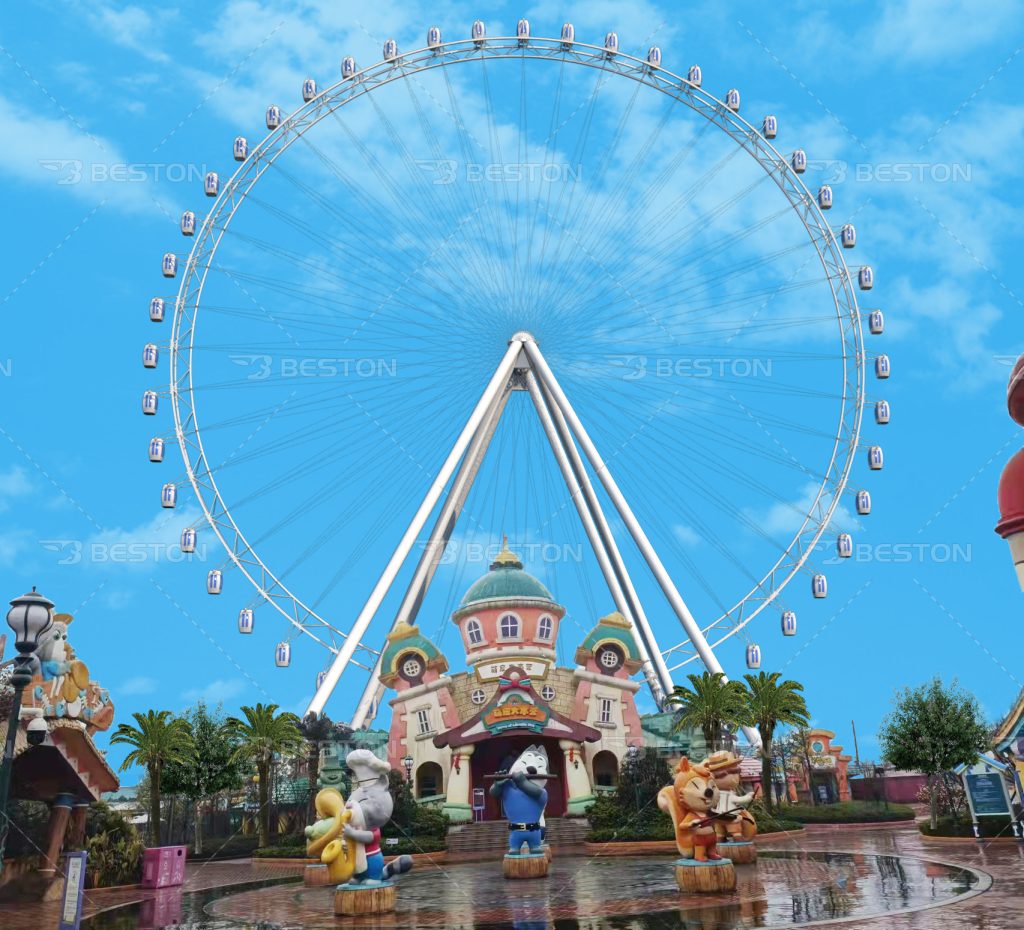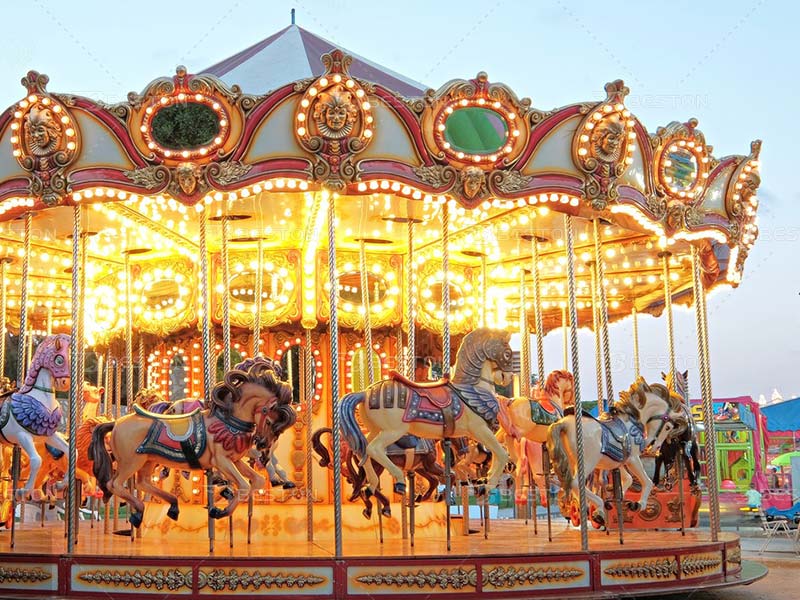Investing in amusement rides can be a rewarding venture, but the process requires careful planning and market research. Whether you’re starting a new park or expanding an existing one, it’s crucial to gather insights about the market, ride types, costs, and suppliers. This guide outlines essential steps for conducting effective market research when investing in amusement rides for sale.
1. Understanding the Amusement Ride Market
Before considering specific rides, it’s important to understand the overall landscape of the amusement ride market.
- Trends in Ride Types: The amusement ride industry is constantly evolving. Traditional rides like ferris wheel rides remain popular, but newer innovations such as interactive or virtual reality-based experiences are gaining traction.
- Consumer Demographics: The type of audience your park attracts should influence your ride choices. Families with young children may prefer gentler rides, while thrill-seekers might be drawn to high-intensity options like roller coasters.
- Regional Preferences: Be aware of regional differences in preferences. Some areas may favor more classic attractions, while others might prioritize modern or unique experiences.

2. Evaluating Popular Ride Types
When researching which rides to invest in, focus on those that are currently in high demand and those that can deliver the best return on investment.
Ferris Wheel Rides
- Timeless Appeal: Ferris wheels continue to be a staple in amusement parks due to their broad appeal. They offer panoramic views, attract families, and are relatively simple to maintain compared to more complex rides.
- Financial Considerations: While ferris wheel rides require an initial investment, their long lifespan and minimal operational costs make them a sound investment. It’s important to assess local demand for this ride type.
Roller Coasters for Sale
- Different Models and Features: Roller coasters come in various designs, from traditional wooden coasters to modern steel versions. The choice depends on the type of thrill your target market seeks.
- Considerations for Investment: When purchasing a roller coaster for sale, evaluate factors such as the coaster’s capacity, safety features, and how it complements your existing attractions. Roller coasters typically have higher upfront costs, but they can attract a high volume of visitors, making them a potentially profitable addition.
3. Analyzing Costs and Return on Investment (ROI)
Every investment must be evaluated in terms of its financial feasibility.
- Initial Purchase and Installation Costs: The cost of acquiring a ride is only part of the equation. Installation, transportation, and permits can add significant expenses. Always factor in these costs when determining the overall financial commitment.
- Operating Costs: Ongoing expenses, such as staff, maintenance, and insurance, can vary greatly depending on the type of ride. For example, how much does a carousel cost to operate annually? While carousels tend to have lower maintenance costs compared to other attractions, regular upkeep is still required.
- Revenue Projections: Analyze how the new ride will contribute to overall revenue. Consider ticket prices, how many visitors the ride can handle per day, and additional revenue streams like food, merchandise, and photos. Rides that increase foot traffic in other areas of the park can generate additional income.
- ROI Calculation: Use projected ticket sales, maintenance costs, and lifespan of the ride to calculate the ROI. A higher initial investment may be justified if the ride has a strong potential to increase park attendance and overall profitability.

4. Maintenance and Safety Considerations
Investing in amusement rides requires a long-term view, including consideration of maintenance and safety requirements.
- Safety Standards: Every amusement ride must meet industry safety standards. Ensure that the rides you are considering comply with local and international regulations. A ride with robust safety features, such as advanced braking systems and secure seating, can reduce the risk of accidents.
- Maintenance Requirements: Regular maintenance is essential to keep rides in operational condition. Wooden roller coasters, for example, often require more frequent inspections and repairs compared to steel coasters. Factor in the long-term cost of maintenance when evaluating potential rides.
- Warranty and Support: Some manufacturers offer extended warranties or maintenance packages. These can help reduce unexpected repair costs and minimize downtime, which is essential for ensuring that your rides remain operational and safe for guests.
5. Comparing Suppliers and Manufacturers
When you have identified the types of rides you are interested in, the next step is to evaluate suppliers and manufacturers.
- Reputation and Experience: Look for manufacturers with a proven track record in producing safe, high-quality rides. Consider seeking out reviews or testimonials from other amusement park owners who have purchased similar rides.
- Cost Transparency: Obtain a detailed breakdown of all costs associated with the ride. This should include the purchase price, shipping, installation, maintenance, and any other hidden fees that might arise.
- Customization Options: Some suppliers offer customization to meet specific park themes or space requirements. This can be beneficial if you’re looking to create a unique experience for your visitors.
- After-Sales Support: A supplier’s level of customer service is critical. Ensure they offer comprehensive after-sales support, including training for staff and assistance with ride setup.
6. Risk Assessment and Long-Term Considerations
Before finalizing any investment, it is crucial to assess potential risks and long-term viability.
- Market Fluctuations: Amusement park trends can shift over time. It’s important to stay informed about changes in consumer preferences and park trends. For example, if virtual reality attractions become a dominant trend, investing in rides that incorporate this technology may provide a competitive edge.
- Regulatory Changes: Changes in local or international regulations can impact the operation of amusement rides. Keep an eye on legislation related to safety standards, environmental regulations, and accessibility requirements.
- Depreciation and Resale Value: While amusement rides can last many years, they do depreciate in value over time. When considering a purchase, take into account how the ride might retain its value if you decide to sell or upgrade in the future.
Conclusion
Investing in amusement rides is a significant decision that requires careful market research and financial planning. Understanding the current market trends, evaluating the popularity of specific ride types like ferris wheel rides or roller coasters, and assessing costs and ROI are all critical steps. Additionally, factoring in maintenance requirements, safety features, and supplier reputation ensures that the rides you invest in will meet both financial goals and safety standards.
By following these research tips and conducting thorough evaluations, you can make informed decisions that will lead to a successful and profitable investment in amusement rides.